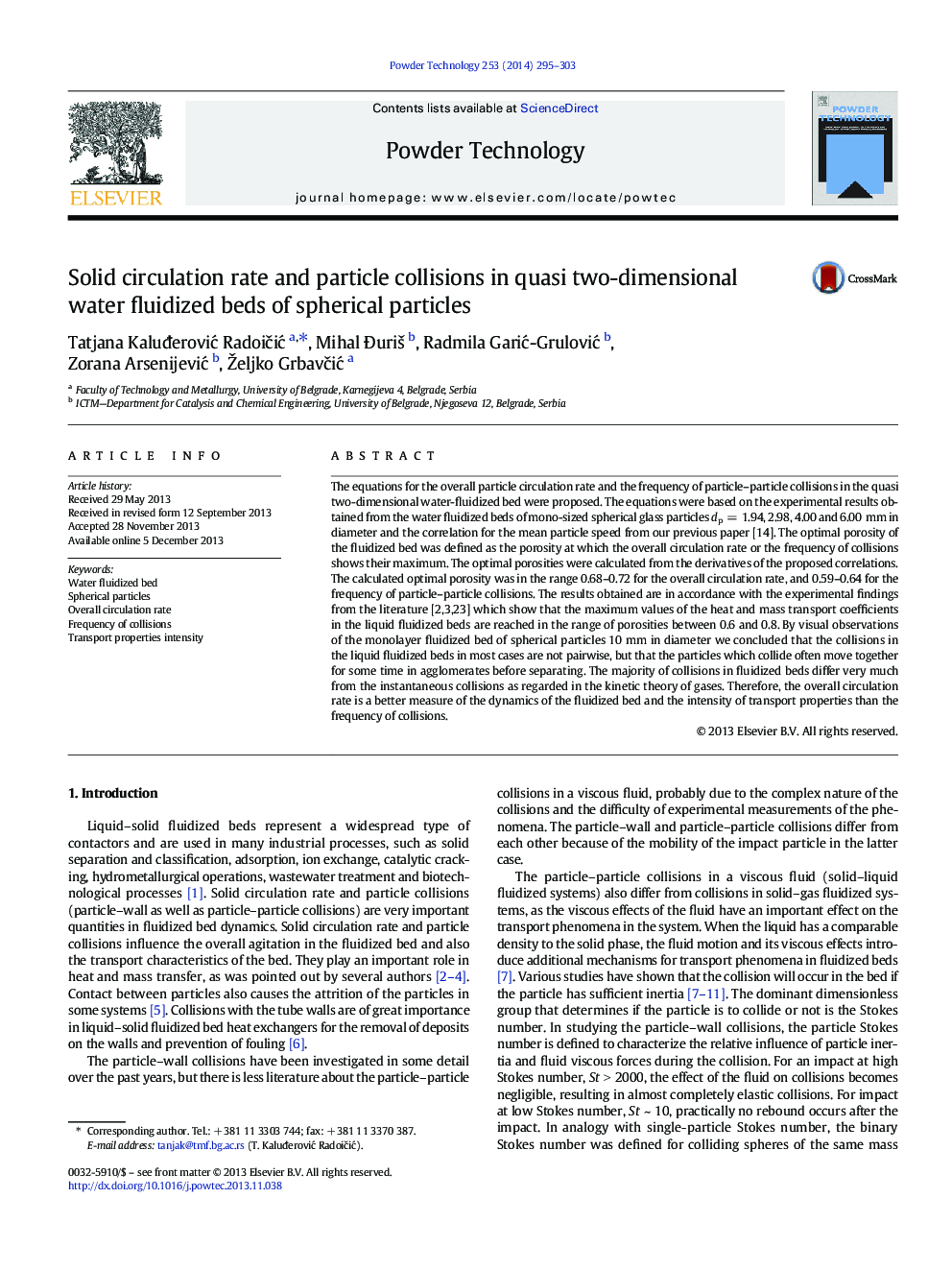| Article ID | Journal | Published Year | Pages | File Type |
|---|---|---|---|---|
| 236464 | Powder Technology | 2014 | 9 Pages |
•The correlation for overall particle circulation rate in fluidized bed was proposed.•The correlation for particle–particle collision frequency was obtained.•Optimal porosities were calculated from derivatives of the correlations.•The majority of collisions for ε < 0.8 in water fluidized bed are not pairwise.•The overall circulation rate can be used as a measure of transport properties intensity.
The equations for the overall particle circulation rate and the frequency of particle–particle collisions in the quasi two-dimensional water-fluidized bed were proposed. The equations were based on the experimental results obtained from the water fluidized beds of mono-sized spherical glass particles dp = 1.94, 2.98, 4.00 and 6.00 mm in diameter and the correlation for the mean particle speed from our previous paper [14]. The optimal porosity of the fluidized bed was defined as the porosity at which the overall circulation rate or the frequency of collisions shows their maximum. The optimal porosities were calculated from the derivatives of the proposed correlations. The calculated optimal porosity was in the range 0.68–0.72 for the overall circulation rate, and 0.59–0.64 for the frequency of particle–particle collisions. The results obtained are in accordance with the experimental findings from the literature [2,3,23] which show that the maximum values of the heat and mass transport coefficients in the liquid fluidized beds are reached in the range of porosities between 0.6 and 0.8. By visual observations of the monolayer fluidized bed of spherical particles 10 mm in diameter we concluded that the collisions in the liquid fluidized beds in most cases are not pairwise, but that the particles which collide often move together for some time in agglomerates before separating. The majority of collisions in fluidized beds differ very much from the instantaneous collisions as regarded in the kinetic theory of gases. Therefore, the overall circulation rate is a better measure of the dynamics of the fluidized bed and the intensity of transport properties than the frequency of collisions.
Graphical abstractFigure optionsDownload full-size imageDownload as PowerPoint slide
